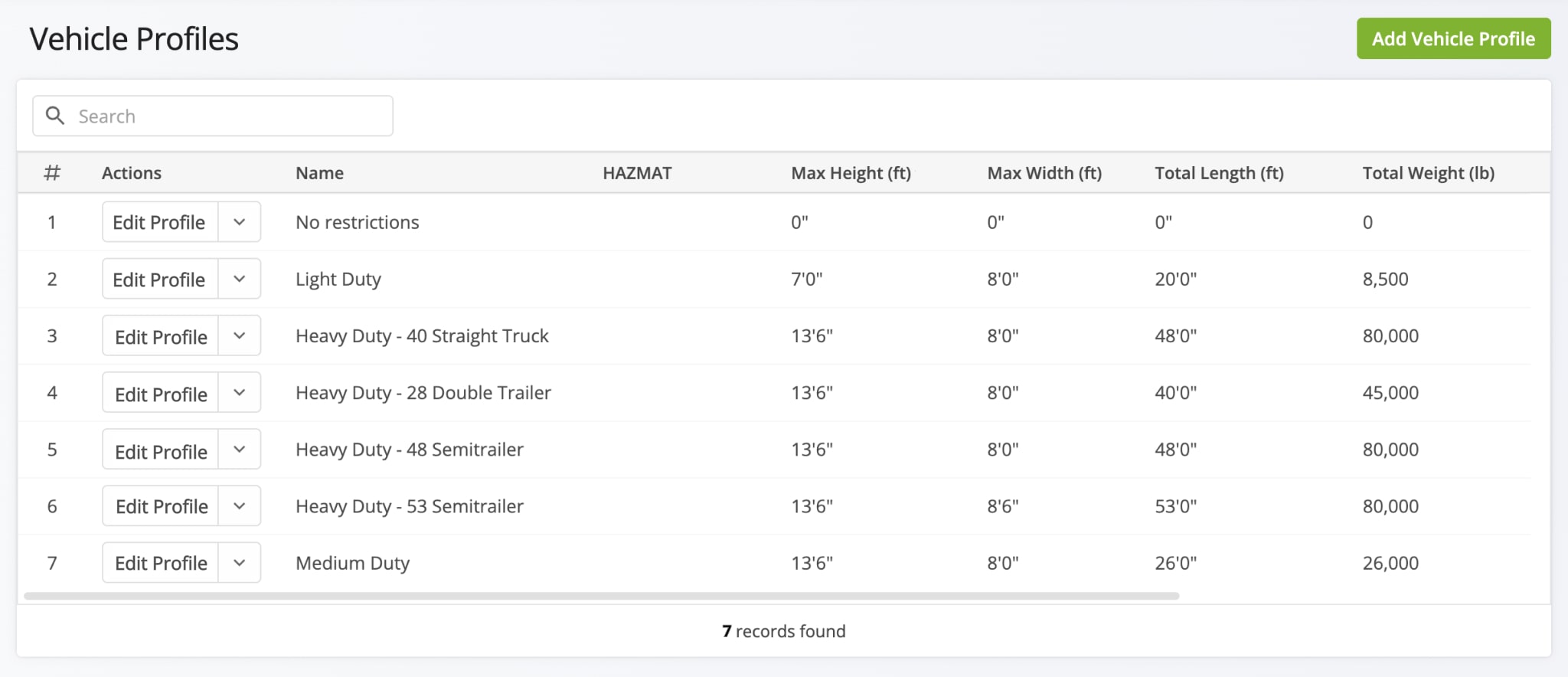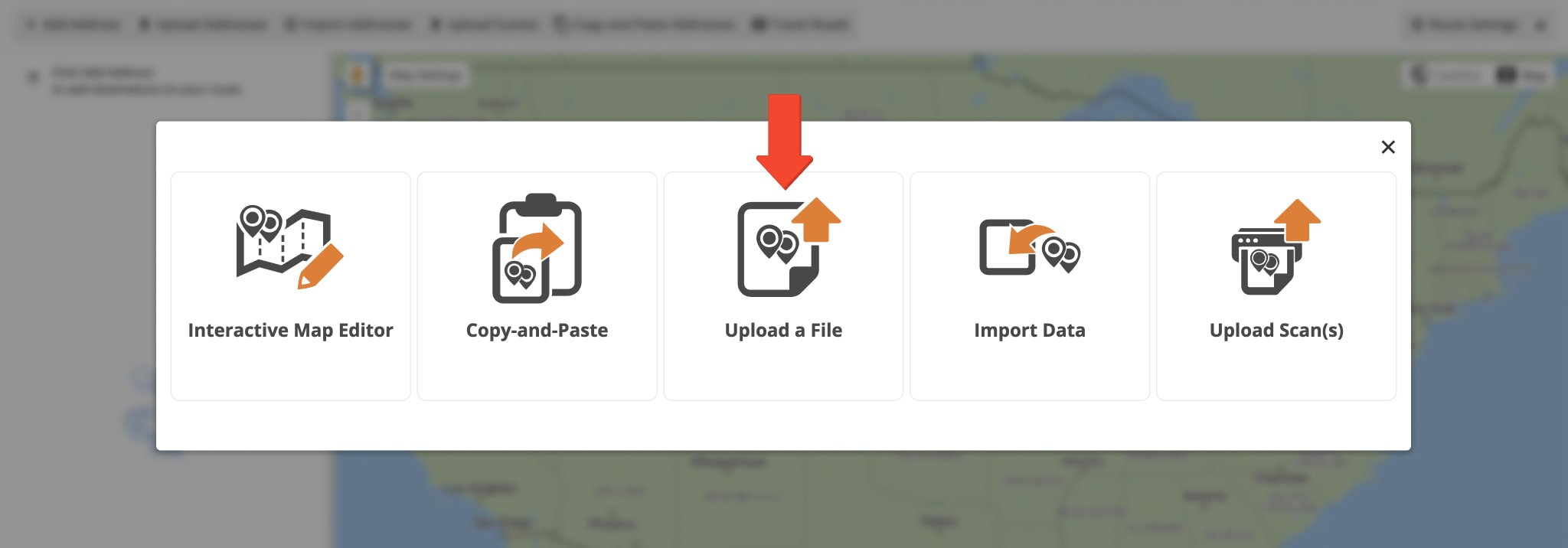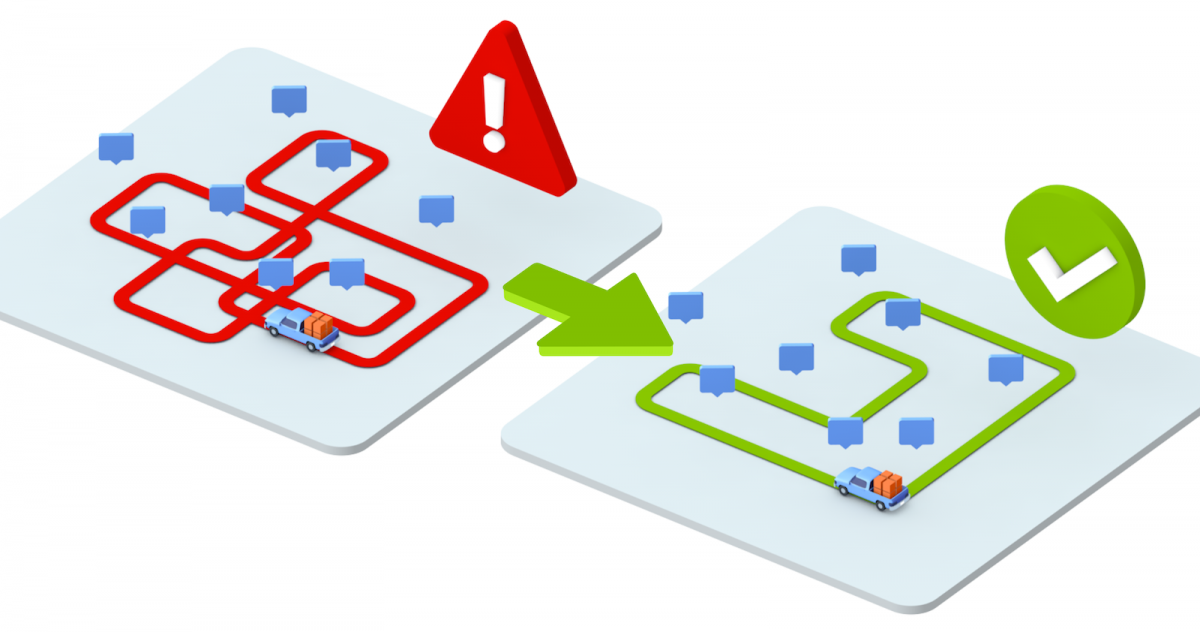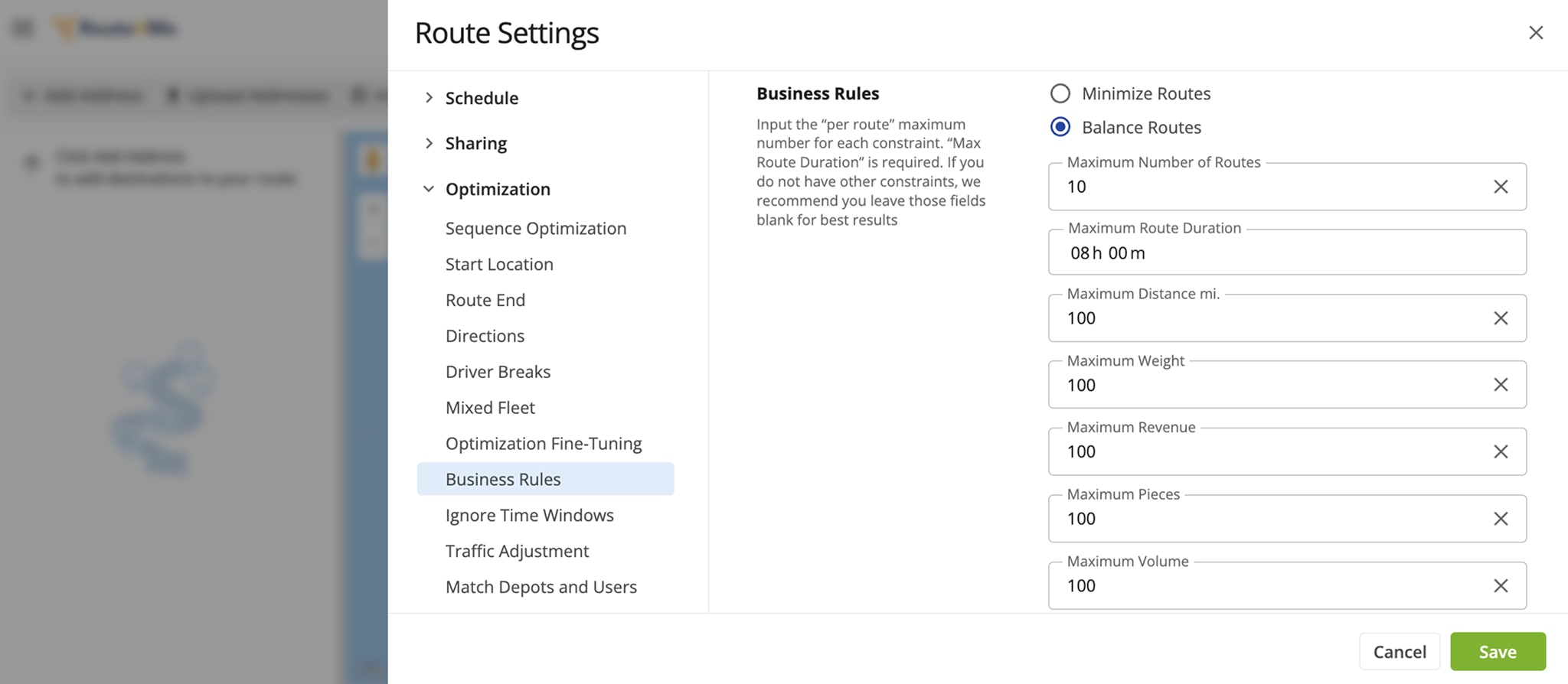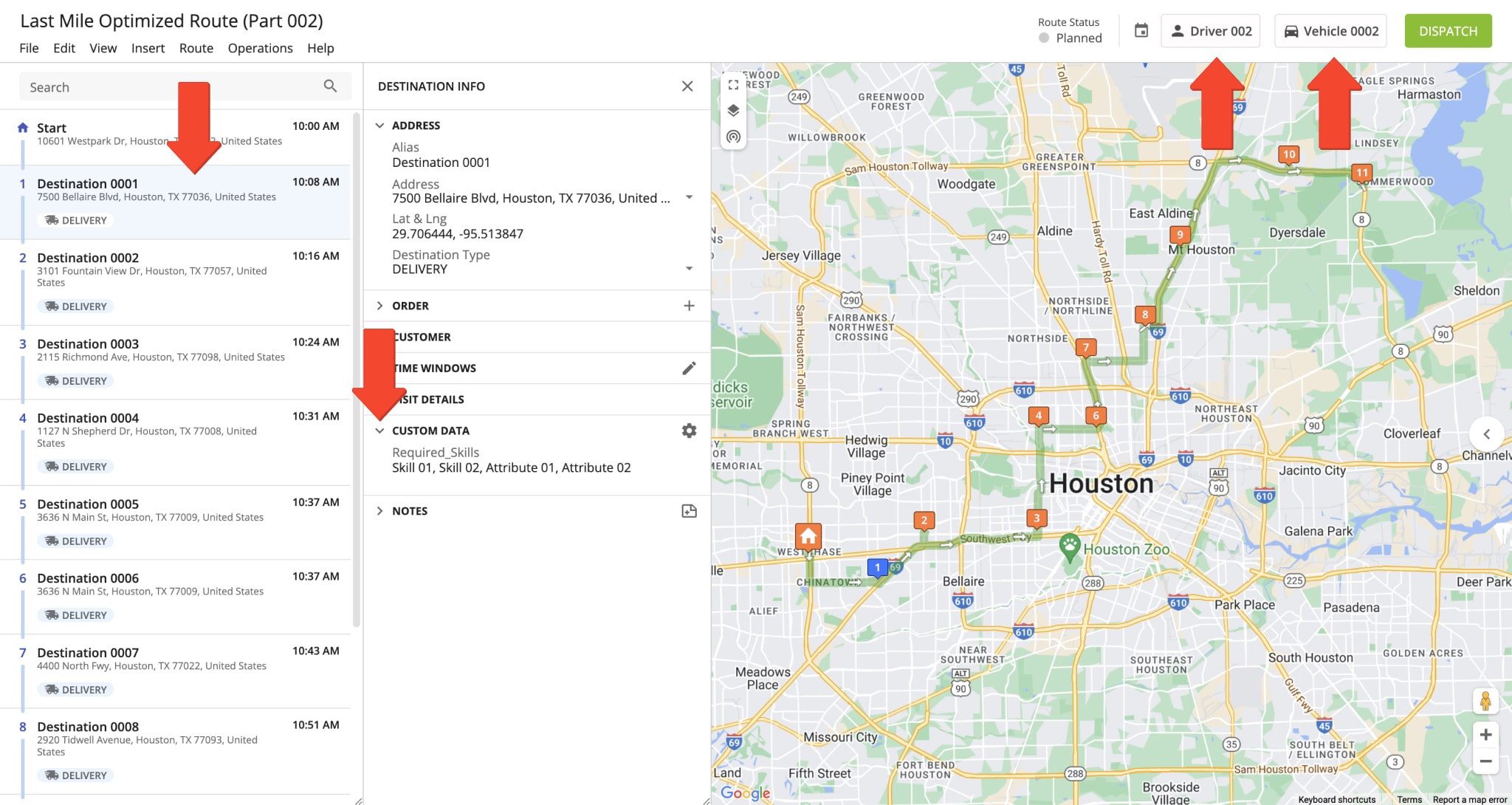How To Optimize A Delivery Route Using Multi-Stop Routing Software
Optimizing a delivery route is key to improving delivery efficiency, reducing costs, and maximizing fleet capacity. Route optimization software allows you to plan the most effective sequence of stops based on driver availability, vehicle capacity, customer time windows, and other critical factors. With a multi-stop route planner like Route4Me, you can create smarter, faster, and more cost-effective delivery routes. Here’s how to optimize a delivery route in six simple steps.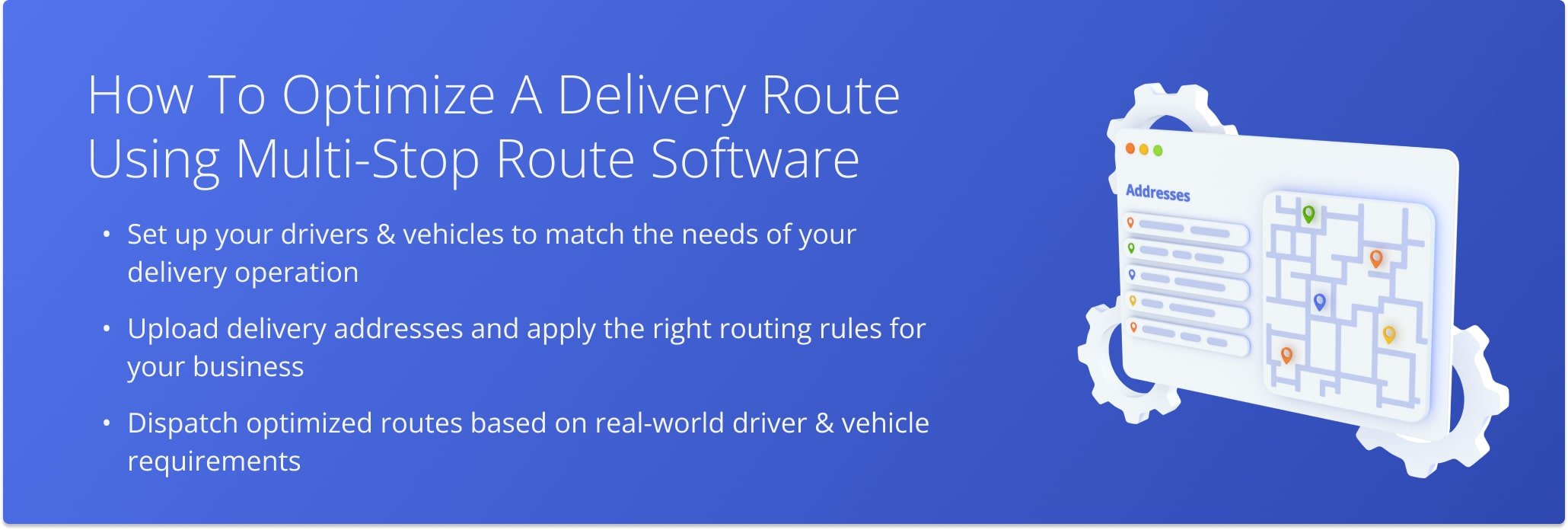
Table of Contents
1. Add Drivers And Vehicles To A Multi-Stop Route Planner
Start by create accounts for each delivery driver in your multi-stop route planner. This gives you visibility into availability, working hours, route performance, total stops visited, and distance driven.
Next, add your fleet vehicles, either by importing telematics data or creating vehicle profiles manually. Include details like vehicle type, loading capacity, cubic volume, and the number of packages each vehicle can carry. With all this data set up, your multi-stop route planner can optimize routes according to fleet capacity—allowing you to deliver more with fewer resources.
2. Specify Vehicle Parameters And Driver Skills
If not already done, define each vehicle’s parameters and match drivers according to their skills and licenses. This is especially important for mixed fleets with vans, heavy-duty trucks, or special cargo vehicles.
For example, delivering large furniture requires a commercial vehicle and a CDL driver. The route planner ensures that each delivery route is assigned the right vehicle and driver without manual calculation, making it easier to optimize a delivery route efficiently.
3. Upload Addresses For Multiple Stops
Next, upload cusomer delivery addresses from spreadsheets, cloud storage, or file transfer tools. The Route4Me multi-stop route planner allows bulk uploads from Google Drive, Dropbox, Xero, Box.net, and other services.
Centralizing all delivery addresses makes it much faster and easier to optimize a delivery route across multiple stops.
4. Plan And Optimize Delivery Routes
After uploading your addresses, it’s time to plan the delivery route. A capable multi-stop route planner will automatically determine the most efficient sequence of stops based on your optimization criteria.
Route4Me offers options for:
- Multi-stop, multi-driver route optimization
- Multi depot, multi-driver optimization
- Cross-docking and transloading optimization
- Commercial vehicle route planning and optimization
By choosing the right settings, you can optimize a delivery route that meets your business and fleet requirements.
5. Set Routing Constraints And Business Rules
To optimize a delivery route effectively, factor in customer and operational constraints such as:
- Cubic volume
- Number of packages that can fit into each delivery car
- Service times
- Time windows and customer availability
- Weather and traffic slowdown
6. Dispatch Delivery Routes According To Skills And Fleet Capacity
Finally, assign optimized routes to drivers based on their skills and licenses, and pair them with the appropriate vehicle. Dispatching planned routes in this way ensures each route is completed efficiently, safely, and on time, whether it involves standard deliveries or special cargo.
Last Updated:

